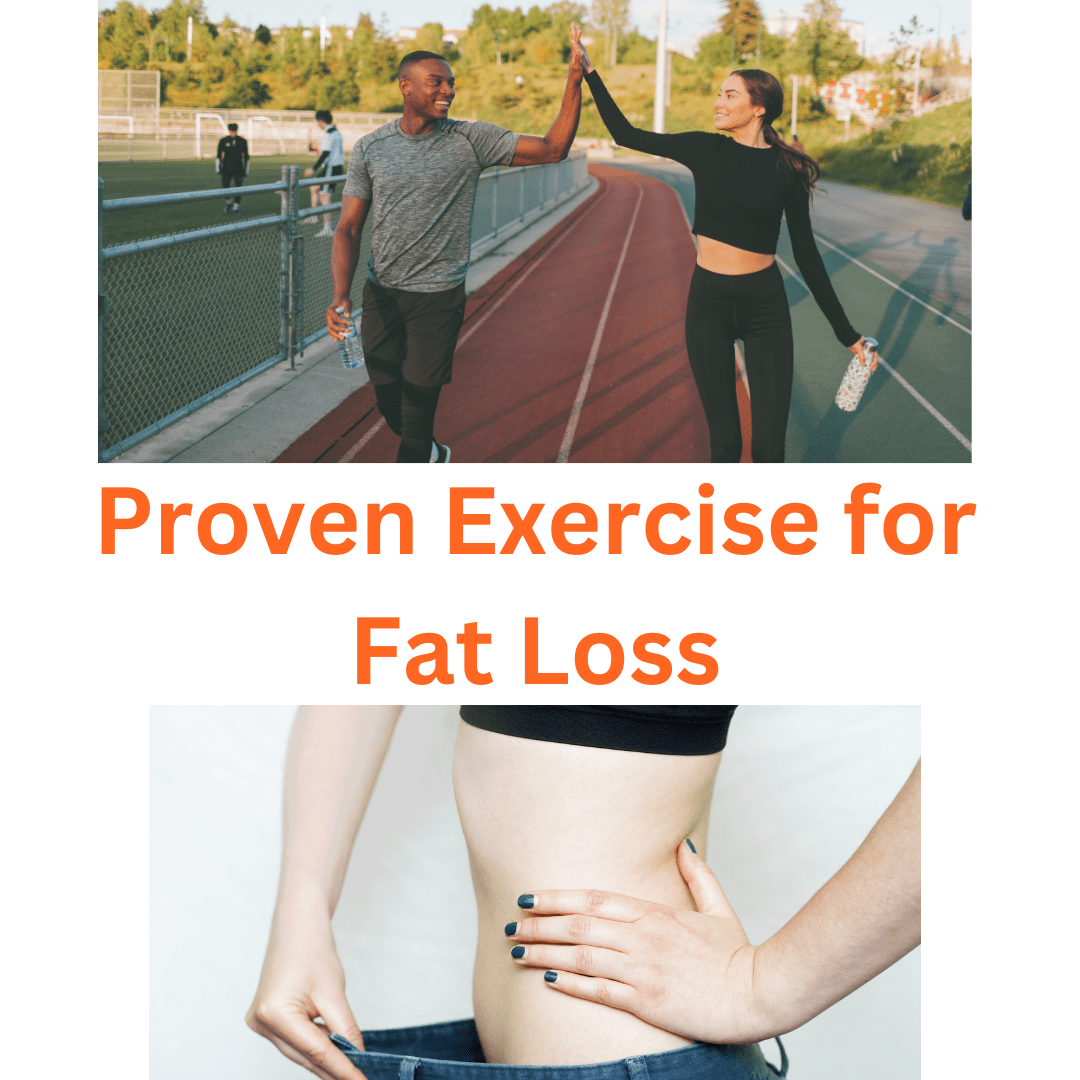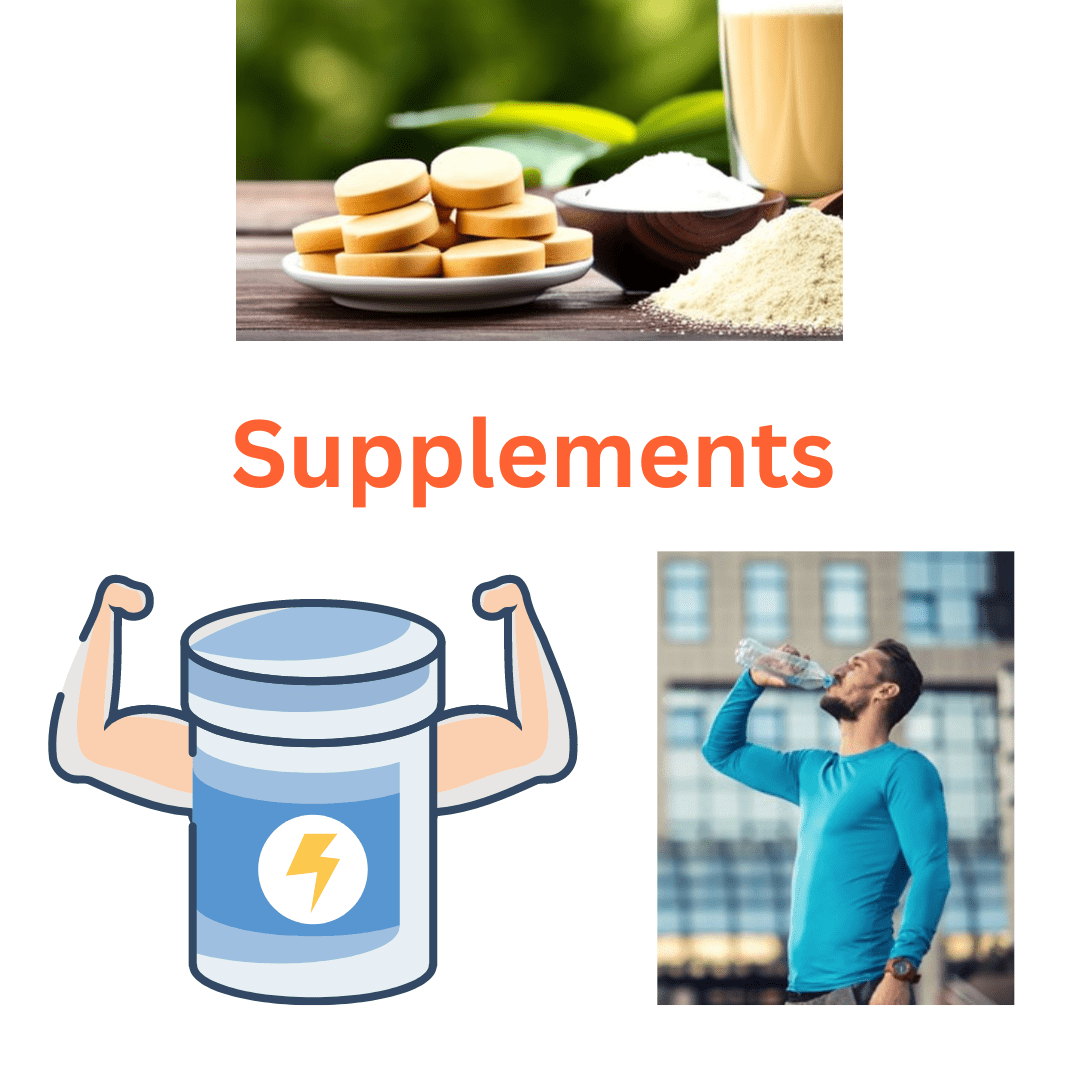
How to Lose Fat by doing High Intensity Interval Training (HIIT)
High-Intensity Interval Training (HIIT) has recently gained popularity as an effective way to burn fat and improve cardiovascular fitness. HIIT is a training method that involves alternating periods of high-intensity exercise with periods of low-intensity recovery or rest.
Many people have switched to HIIT from traditional steady-state cardio exercises like running on the treadmill or cycling because HIIT is more effective at burning fat. Studies have found that HIIT can burn up to 30% more calories than steady-state cardio.
But what makes HIIT so effective at burning fat? The answer lies in how it works and its impact on metabolism.
How HIIT Works to Burn Fat More Effectively Than Steady-State Cardio
When you do steady-state cardio, your body primarily burns glycogen (stored carbohydrates) for energy. Once your body depletes glycogen stores, it begins breaking down muscle tissue for energy instead of burning fat.
On the other hand, during high-intensity intervals in HIIT, your body burns through glycogen quickly and then switches over to using stored fat as fuel. As a result, you burn more fat during and after your workout than steady-state cardio because your metabolism stays elevated for hours following a HIIT workout.
Additionally, high-intensity exercise has been shown to increase EPOC (Excess Post-Exercise Oxygen Consumption), which means your body continues burning calories even after working out. This post-workout calorie burn can last up to 24 hours, depending on the intensity of the workout.
The Benefits of High-Intensity Interval Training for Fat Loss
One significant benefit of HIIT workouts is increased metabolic rate and calorie burn during and after exercise. As mentioned earlier, because HIIT raises metabolism significantly higher than steady-state cardio, it allows the body to burn calories and fat faster. Another benefit of HIIT is improved insulin sensitivity.
Insulin is the hormone that regulates blood sugar levels and plays a role in fat storage. High-intensity exercise has been shown to improve insulin sensitivity, which means your body is better able to use insulin to transport glucose into your cells for energy instead of storing it as fat.
High-intensity exercise can also increase the production of human growth hormone (HGH), which plays a crucial role in building muscle and burning fat. HGH helps break down stored fat for energy during high-intensity intervals and can help maintain muscle mass while burning fat.
Because HIIT workouts are shorter than traditional cardio workouts, they are more efficient at helping people lose weight without losing muscle mass. This is particularly important because when people lose weight through standard cardio workouts such as running or cycling, they will often sacrifice some hard-earned muscle tissue along with their fat loss.
High-intensity interval training has become increasingly popular over the years due to its efficacy in burning stubborn fats while maintaining lean muscle mass – which could be problematic with traditional steady-state cardio exercises alone. The following sections will dive into how to design a HIIT workout plan specifically targeted toward losing fat while achieving other fitness goals, such as improving cardiovascular endurance through an increased-intensity workout routine.
Understanding HIIT
Definition and Explanation of What HIIT Is
High-intensity interval training (HIIT) is a form of exercise that involves short bursts of high-intensity activity alternated with periods of rest or low-intensity exercise. The duration and intensity of the intervals can vary. Still, a typical HIIT workout may involve 30 seconds to 1 minute of all-out effort followed by 1-2 minutes of rest or low-intensity exercise. This type of training is known for its efficiency in burning calories and improving overall fitness.
High Intensity Interval Training Decreases Abdominal Body Fat
Exercise is great for your body and is proven through studies to help with things like insulin sensitivity and fat loss, even if you don’t lose weight overall. It can also help reduce fat in your belly and under your skin, with some studies showing that exercise can reduce belly fat even more than other types of fat.
When it comes to exercise, the harder you work, the more belly fat you can lose. Doing HIIT is more impactful to losing fat than doing moderate or low intensity exercise, according to an analysis of studies.
One way that exercise might help reduce belly fat is by using a molecule called IL-6. IL-6 is produced by different cells in your body, including fat cells and immune cells. When you exercise, your muscles produce more IL-6, which can help break down fat.
The Science Behind How HIIT Helps to Burn Fat
The intense, short bursts involved in HIIT workouts trigger a process called excess post-exercise oxygen consumption (EPOC). EPOC causes the body to continue burning calories accelerated, even after the workout. This means that even though you may only work out for a short period, your body continues to burn fat long after you have stopped exercising.
HIIT also helps to increase muscle mass, which in turn increases metabolic rate. When you have more muscle mass, your body needs more energy to maintain it.
This means you burn more calories even when at rest. HIIT workouts have been shown to improve insulin sensitivity.
Insulin is responsible for regulating blood sugar levels in the body. When insulin sensitivity is improved, the body becomes better at using glucose for energy instead of storing it as fat.
Comparison Between HIIT and Steady-State Cardio
Steady-state cardio involves exercising moderately for an extended period (typically 30 minutes or more). While this exercise can burn calories and improve cardiovascular health, it does not provide the same benefits as HIIT regarding fat loss. Studies have shown that HIIT burns more calories per minute than steady-state cardio.
Additionally, while steady-state cardio may cause some muscle loss, HIIT has been shown to maintain or even increase muscle mass. Another advantage of HIIT is that it can be done in a shorter amount of time than steady-state cardio.
A 20-30 minute HIIT workout can provide the same or more incredible fat-burning benefits as an hour-long steady-state cardio session. HIIT is an efficient and effective way to burn fat.
It triggers EPOC, increases muscle mass, and improves insulin sensitivity. Compared to steady-state cardio, it burns more calories per minute and can be completed in less time.
Comparing Steady State vs. Interval Training Benefits
Steady-state exercise, also known as continuous exercise, involves maintaining a consistent intensity and heart rate for an extended period of time. While steady-state exercise is effective at improving cardiovascular endurance, HIIT has been found to provide more benefits in a shorter amount of time. A 2019 study found that HIIT provided greater improvements in cardiovascular fitness compared to moderate-intensity continuous training (MICT) after only eight weeks of training. Furthermore, research has demonstrated that HIIT increases fat burning, enhances insulin sensitivity, and reduces blood pressure more effectively than MICT. (Ramirez-Velez, et. all, 2019)
The Benefits of HIIT for Fat Loss
Increased Metabolic Rate and Calorie Burn During and After Exercise
HIIT is an effective way to significantly increase your metabolic rate, which means you’ll burn more calories both during and after exercise. This occurs because of the intense bursts of activity involved in HIIT workouts, which require a lot of energy from your body.
Studies have shown that HIIT can increase your metabolic rate for up to 24 hours post-workout, leading to a higher overall calorie burn throughout the day. In addition, HIIT workouts can burn more calories per minute than steady-state cardio because of the increased intensity level.
For example, a 20-minute HIIT workout can burn as many calories as a 40-minute steady-state cardio session. This makes it an efficient way to burn fat while also saving time.
Improved Insulin Sensitivity
Insulin is a hormone that regulates your blood sugar levels by moving glucose from your bloodstream into cells, where it can be used for energy or stored as fat. High insulin levels can lead to weight gain and insulin resistance, which increases the risk of type 2 diabetes.
Fortunately, research has shown that HIIT can improve insulin sensitivity in overweight adults with or without type 2 diabetes. This means their bodies become better at using insulin to regulate blood sugar levels, leading to better weight management and overall health.
Increased Production of Human Growth Hormone (HGH)
Human growth hormone (HGH) is a hormone produced by the pituitary gland that plays a vital role in building muscle mass and burning fat. As we age, our natural production of HGH decreases, making it harder to maintain muscle mass and lose fat.
However, studies have shown that HIIT workouts may help increase HGH production in both men and women, leading to more significant fat loss and muscle building. This is because HIIT workouts stress the body in a way that triggers the release of HGH, which helps to increase muscle protein synthesis and boost metabolism.
Maintenance of Muscle Mass While Burning Fat
One of the downsides of traditional steady-state cardio is that it can lead to muscle loss and fat loss. This can be especially concerning for people who want to maintain or build muscle mass while burning fat. Fortunately, HIIT workouts can help mitigate this problem by maintaining or increasing muscle mass while burning fat.
This occurs because HIIT workouts are designed to stress both your aerobic and anaerobic energy systems, which helps preserve your hard-earned muscle mass. In addition, research has shown that HIIT workouts can increase certain hormones like testosterone and growth hormone, which play an essential role in building and maintaining muscle mass.
The Bottom Line
HIIT has many benefits for fat loss beyond just burning calories during a workout. The intense bursts of activity involved in HIIT can lead to increased metabolic rate and calorie burn both during and after exercise.
HIIT has also been shown to improve insulin sensitivity, increase human growth hormone (HGH) production, and maintain or increase muscle mass while burning fat. Incorporating HIIT into your fitness routine may efficiently achieve your weight loss goals and improve overall health.
Designing a HIIT Workout Plan for Fat Loss
Choosing exercises that target multiple muscle groups
One of the keys to a successful HIIT workout plan for fat loss is choosing exercises that work for multiple muscle groups simultaneously. This not only allows you to burn more calories during your workout but also helps to increase your overall strength and endurance. Some examples of exercises that target multiple muscle groups include:
– Squat jumps – Burpees
– Lunges with bicep curls – Mountain climbers
– Pushup variations By incorporating these exercises into your HIIT workout, you can effectively target your entire body and burn more calories in less time.
Setting up a high-intensity work-to-rest ratio
The work-to-rest ratio is essential to designing a HIIT workout plan for fat loss. This ratio refers to the amount of time spent working (exercising) compared to the time spent resting between each exercise or set.
To maximize fat loss, setting up a high-intensity work-to-rest ratio is essential. This means performing short bursts of high-intensity exercise followed by brief rest periods or low-intensity exercise.
For example, you might perform 30 seconds of all-out effort on the rowing machine, followed by 15 seconds of recovery before moving on to another exercise. As you become fitter, you can adjust this ratio to increase the time spent working and decrease the time spent resting.
Incorporating both aerobic and anaerobic exercises
Another critical aspect of designing an effective HIIT workout plan for fat loss is incorporating aerobic and anaerobic exercises into your routine. Aerobic exercises increase your heart rate and help improve cardiovascular fitness, such as running or cycling.
On the other hand, Anaerobic exercises are high-intensity exercises that focus on building strength and power, such as weightlifting or sprinting. By incorporating both types of exercises into your HIIT workout plan, you can improve your overall fitness level while simultaneously burning fat.
This combination of aerobic and anaerobic exercises also helps to keep your workouts exciting and challenging. Here’s an example of a HIIT workout plan that incorporates both aerobic and anaerobic exercises:
– Warm-up: 5 minutes jogging or cycling – Circuit 1: 30 seconds each of burpees, jump squats, and mountain climbers (with 15 seconds rest in between each exercise)
– Rest: 1 minute – Circuit 2: 30 seconds each of kettlebell swings, lunges with bicep curls, and jumping jacks (with 15 seconds rest in between each exercise)
– Rest: 1 minute – Repeat circuit 1 and circuit 2 for a total of three rounds
– Cool-down: Stretching By following this type of HIIT workout plan regularly, you can achieve your fat loss goals while improving your overall fitness level.
Tips for Success with HIIT Workouts
Proper Warm-Up and Cool-Down Techniques
Before jumping into a high-intensity interval training workout, it is essential to properly warm up your muscles and prepare your body for exercise. A good warm-up should increase your heart rate and blood flow to the muscles you will be working on while also loosening up your joints. To warm up effectively, start with some light cardio exercises such as jumping jacks or jogging in place.
Then, perform dynamic stretches that activate your muscle groups during the HIIT workout. This can include walking lunges, high knees, or leg swings.
After completing the high-intensity portion of the workout, it is equally important to cool down properly to help prevent injury and reduce muscle soreness. This can include walking on a treadmill slowly or performing static stretches such as hamstring or quad stretches.
Gradual Progression in Intensity Over Time
One key to success with HIIT workouts is gradually increasing the intensity over time. Start by doing intervals at a moderate intensity level and gradually increase the workload as you get more fit.
It’s important not to push yourself too hard too quickly – this can lead to injury or burnout. Instead of going for maximum effort immediately, focus on steadily increasing effort over multiple sessions until you achieve an optimal level of intensity.
For example, if you start by doing intervals at 60% of your max effort level, aim for 65% next time and then 70% afterward. By taking this gradual approach, you can build strength and endurance over time without sacrificing safety.
Tabata
One popular form of HIIT is the Tabata protocol. The Tabata protocol involves performing high-intensity exercise for 20 seconds followed by 10 seconds of rest, repeated for four minutes. This type of training is effective at improving cardiovascular fitness and burning calories.
Adequate Rest and Recovery Periods
Rest days are an essential part of any fitness routine – they allow your body to recover from intense workouts so that you’ll be ready for more activity later. Regarding HIIT workouts, rest days are significant because of the intensity level.
You may need anywhere from one to three rest days per week, depending on your fitness level. During this time, focus on low-impact exercises such as walking or stretching rather than high-intensity workouts.
Aiming for at least 7 hours of quality sleep per night is also essential to get enough sleep. This will help your body recover and repair itself after intense workouts.
Managing Fatigue and Overtraining
Fatigue is a natural part of any high-intensity workout routine – however, if you find yourself feeling constantly exhausted or struggling with workouts that used to be easy, it may be a sign that you’re overtraining. Overtraining can occur when the intensity or duration of your HIIT workouts exceeds your body’s ability to adapt and recover.
If left unchecked, overtraining can lead to injury and burnout. Listen to your body’s signals and adjust your workout routine to avoid overtraining.
This could mean taking more extended rest periods between sessions or reducing the frequency or duration of HIIT workouts. Remember: consistency is vital when it comes to achieving long-term fitness goals.
The Role of Nutrition in Success with HIIT Workouts
Proper nutrition is critical for success with any fitness program, including high-intensity interval training. Eat a balanced diet rich in lean protein, complex carbohydrates, healthy fats, and plenty of fruits and vegetables. When training hard with HIIT intervals, it’s important not to undereat or restrict calories too much, as this can lead to fatigue and loss of muscle mass.
Conversely, don’t use exercise to excuse eating unhealthy foods or excessive amounts – this will sabotage your weight loss goals. Plan meals so that you have healthy options readily available when hunger strikes.
Stay hydrated by drinking plenty of water before, during, and after workouts – aim for at least 8 cups per day. With the right nutrition plan, you can fuel your body effectively for optimal results with HIIT workouts.
Additional Factors That Affect Fat Loss with HIIT Workouts
Nutrition: The Key to Successful Fat Loss
While HIIT workouts can be very effective for fat loss, it’s important to remember that nutrition plays a crucial role in achieving your weight loss goals. Food contributes up to 80% of your body composition changes. To lose fat, you need to create a calorie deficit by burning more calories than you consume.
This means you need to eat fewer calories than you burn daily. However, you must keep your calories low, which can slow your metabolism and make losing weight harder.
Instead, focus on creating a slight calorie deficit of around 300-500 calories per day through diet and exercise. Aim for a balanced diet with plenty of fruits and vegetables, lean protein sources like chicken or fish, complex carbohydrates like sweet potatoes or brown rice, and healthy fats like avocado or nuts.
Sleep: The Unsung Hero of Weight Loss
Most people know that exercise and nutrition are essential for weight loss but often overlook the importance of sleep. Getting enough sleep is as crucial as exercise and nutrition when losing fat.
During sleep, our bodies repair themselves from the physical stresses we put them through during exercise. This includes repairing muscle tissue and replenishing energy stores to help us perform better during our next workout session.
Additionally, research suggests that lack of sleep may disrupt hormones involved in hunger regulation leading us to crave high-calorie foods even if we are not hungry. Aim for 7-9 hours of sleep per night to support your HIIT workouts and optimize fat loss results.
In Summary
High-intensity interval training effectively burns fat, improves cardiovascular health, and increases muscle endurance. HIIT workouts require effort and commitment, but the results are worth it. However, it’s important to remember that lasting weight loss requires a combination of exercise, nutrition, and adequate rest.
By incorporating healthy eating habits and getting enough sleep into your lifestyle while doing HIIT workouts, you can create a sustainable approach to weight loss that will yield results over time. You can achieve your fat loss goals and feel great in your skin with consistency and patience.
References:
- Ramírez-Vélez, Robinson; Hernández-Quiñones, Paula Andrea; Tordecilla-Sanders, Alejandra; Álvarez, Cristian; Ramírez-Campillo, Rodrigo; Izquierdo, Mikel; Correa-Bautista, Jorge Enrique; Garcia-Hermoso, Antonio; Garcia, Ronald G. (2019-02-04). “Effectiveness of HIIT compared to moderate continuous training in improving vascular parameters in inactive adults“. Lipids in Health and Disease. 18 (1): 42. https://lipidworld.biomedcentral.com/articles/10.1186/s12944-019-0981-z
- Talanian, Jason L.; Galloway, Stuart D. R.; Heigenhauser, George J. F.; Bonen, Arend; Spriet, Lawrence L. (April 2007). “Two weeks of high-intensity aerobic interval training increases the capacity for fat oxidation during exercise in women”. Journal of Applied Physiology. 102 (4): 1439–1447. https://journals.physiology.org/doi/full/10.1152/japplphysiol.01098.2006
- Trapp, E. G.; Chisholm, D. J.; Freund, J.; Boutcher, S. H. (2008-01-15). “The effects of high-intensity intermittent exercise training on fat loss and fasting insulin levels of young women“. International Journal of Obesity. 32 (4): 684–691. https://www.nature.com/articles/0803781
- Verbrugghe, Jonas; Agten, Anouk; Stevens, Sjoerd; Hansen, Dominique; Demoulin, Christophe; O. Eijnde, Bert; Vandenabeele, Frank; Timmermans, Annick (December 2019). “Exercise Intensity Matters in Chronic Nonspecific Low Back Pain Rehabilitation“. Medicine & Science in Sports & Exercise. 51 (12): 2434–2442. https://journals.lww.com/acsm-msse/Fulltext/2019/12000/Exercise_Intensity_Matters_in_Chronic_Nonspecific.2.aspx
- Moreau D, Kirk IJ, Waldie, KE (2017). “High-intensity training enhances executive function in children in a randomized, placebo-controlled trial” https://elifesciences.org/articles/25062
- “High-intensity interval training rapidly improves fitness in patients awaiting surgery for urological cancer“. NIHR Evidence (Plain English summary). National Institute for Health and Care Research. 2020-06-05. https://evidence.nihr.ac.uk/alert/high-intensity-interval-training-rapidly-improves-fitness-in-patients-awaiting-surgery-for-urological-cancer/
- Langleite T. M., Jensen J., Norheim F., Gulseth H. L., Tangen D. S., Kolnes K. J., et al. (2016). Insulin sensitivity, body composition and adipose depots following 12 w combined endurance and strength training in dysglycemic and normoglycemic sedentary men. Arch. Physiol. Biochem. 122 167–179. 10.1080/13813455.2016.1202985
- Vissers D., Hens W., Taeymans J., Baeyens J.-P., Poortmans J., Van Gaal L. (2013). The effect of exercise on visceral adipose tissue in overweight adults: a systematic review and meta-analysis. PLoS One 8:e56415. 10.1371/journal.pone.0056415









